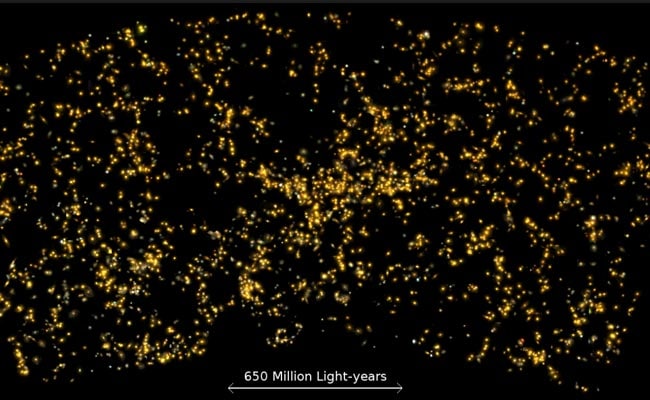Indian astrophysicists have found an enormous new supercluster of galaxies 4 billion light-years away in the constellation of Pisces. The object, named the Saraswati supercluster, stretches for 600 million light-years across and has a mass of 20 million billion Suns, or around 20,000 Milky Ways.
The finding, published in the Astrophysical Journal, throws a spanner in the works of the present cosmological model. The supercluster is too big to be already in place 10 billion years after the Big Bang (which is when we are observing it). It has 43 clusters of galaxies, and according to the present model, shouldn't have had time to mount up to this size.

“Our work will help to shed light on the perplexing question; how such extreme large scale, prominent matter-density enhancements had formed billions of years in the past when the mysterious Dark Energy had just started to dominate structure formation. Previously only a few comparatively large superclusters have been reported, for example, the ‘Shapley Concentration’ or the ‘Sloan Great Wall’ in the nearby universe, while the ‘Saraswati’ supercluster is far more distant one.” the authors of the paper from the Inter University Centre for Astronomy & Astrophysics and the Indian Institute of Science Education and Research, said in a statement.
Looking at galaxies with a telescope, it’s not clear if they are near or far. Objects might seem near to each other but they might be separated by billions of light-years. Working out distances needs a lot more work and exact measurements of the light (spectrum) of each galaxy.
“We were very surprised to spot this giant wall-like supercluster of galaxies, visible in a large spectroscopic survey of distant galaxies, known as the Sloan Digital Sky Survey. This supercluster is clearly embedded in a large network of cosmic filaments traced by clusters and large voids,” that authors added.
Two of the galaxy clusters in the Saraswati supercluster. SDSS
